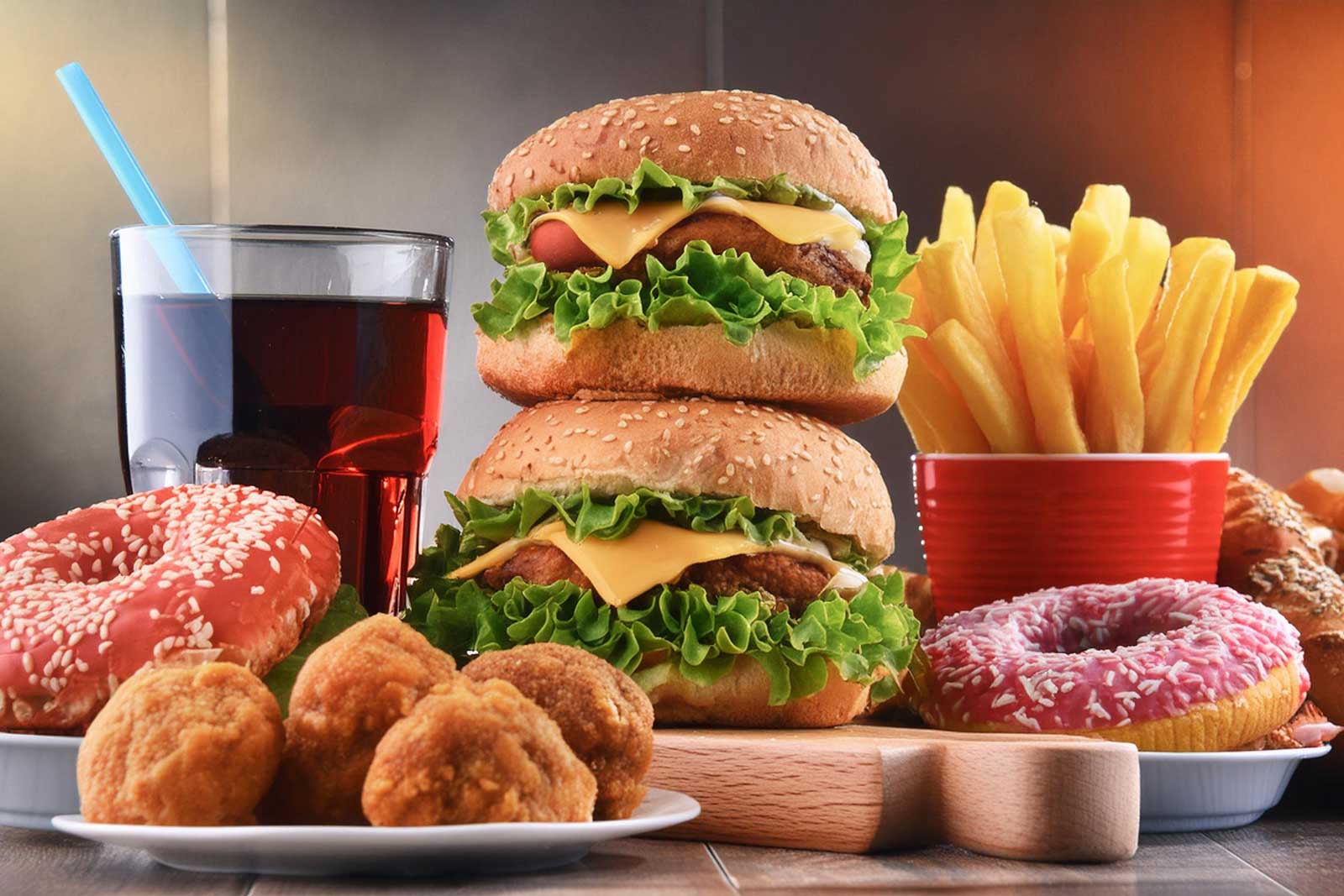Ultra-processed foods: what are they and why do we need to avoid them?

This subsection addresses the following four questions:
What are ultra-processed foods (UPFs)?
A significant majority, ranging from 70% to 90%, of the products manufactured by global food corporations are ultra-processed foods (UPFs). Such products are usually extensively packaged, heavily branded, and characterized by a high degree of of artificiality. Typically made from low-quality, refined ingredients such as starches, sugars, oils, and/or protein isolates, UPFs require numerous additives like colorants, texturizers, synthetic flavors, and bulking agents to enhance their sensory appeal from initially inferior ingredients to hyperpalatability. As a result, UPFs are concoctions that offer little in terms of nutritional value and often promote addictive consumption patterns that lead to overeating. By prioritizing convenience, palatability, and profitability, they are designed to dominate the market, displacing traditional foods. Through aggressive marketing and sustainability claims, UPFs drive consumer demand, consolidating corporate power and marginalizing smaller food producers. Socially, they undermine communal eating practices, fostering individualized consumption that can contribute to disconnection and excessive consumption. The widespread influence of UPFs raises significant concerns regarding public health, environmental sustainability, and socio-economic equity within the global food system. Moreover, multinational corporations frequently blur the distinction between UPFs and less processed, more benign foods (e.g., yogurt), creating confusion about their health implications.
What is the current prevalence of UPF in the diet?
Annual per capita consumption of ultra-processed foods (UPFs) is estimated at 100 kg in Western Europe and 120 kg in North America and Australasia, with ultra-processed drinks accounting for an additional 180 kg and 120 kg, respectively. In France, two-thirds of conventional industrial foods and half of organic products are categorized as ultra-processed. In high-income countries, UPFs constitute 15-60% of total caloric intake for adults, while in Brazil, it is 13-21%. In the US, over 70% of packaged foods are ultra-processed, and these foods make up 70-80% of the diet for the top consumers in the US, UK, and Australia. Children in Anglosphere countries get 55-65% of their calories from UPFs, with US youth consuming 61-67% of their energy from these foods between 1999 and 2018. Even in France, UPFs account for 46% of children's diets, compared to 35% for adults.
What are the trends and perspectives?
The global situation regarding ultra-processed foods (UPFs) is expected to worsen due to aggressive marketing and the influence of large corporations on policies and science. UPFs are disproportionately consumed by lower socioeconomic groups, exacerbating existing nutritional imbalances and potentially causing metabolic disturbances in their children. Higher socioeconomic groups are also vulnerable, particularly due to marketing around "plant-based" foods and health messages like NutriScore. The push for plant-based diets has led to an increase in highly processed mock animal foods, which, although nutrient-fortified, contribute to higher UPF intake among vegetarians and vegans. Nutrient Profiling Systems (NPS) often downplay the risks of UPFs while overemphasizing the drawbacks of animal source foods, benefiting food corporations that can easily reformulate products to meet these nutrient criteria. Reformulation typically involves reducing certain nutrients or adding "healthy" ingredients, but this does not necessarily improve the overall healthiness of the food. The negative health impacts of UPFs are not dictated by their nutrient content only, making such reformulations ineffective and sometimes even harmful.
How do UPFs impact on health?
Ultra-processed foods are a primary modifiable target for early prevention of non-communicable diseases, including colorectal cancer, and are associated with higher risks of mortality, obesity, and type-2 diabetes. Intervention trials show UPFs consumption leads to higher energy intake and weight gain compared to unprocessed diets. The negative health impacts of UPFs are linked to food matrix degradation, gut microbiome effects, and addictive eating behaviors, potentially altering the body's weight set point and causing inflammation and immune dysregulation. Additionally, UPFs often contain harmful additives and contaminants from packaging materials, further contributing to their detrimental effects on health.
What is the impact of UPF on the environment?
The impact of ultra-processed foods on various environmental dimensions is indeed very substantial [Scott 2018; Fardet & Rock 2020; Seferidi et al. 2020; Anastasiou et al. 2022]. In Brazil, impact of dietary change on change in greenhouse gas emissions, water footprint, and ecological footprint was ascribed to ultra-processed foods, while there was no change in these environmental indicators for unprocessed or minimally processed foods [da Silva et al. 2021].
